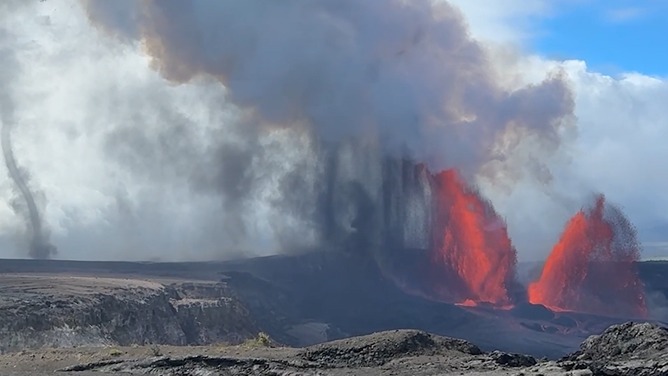
Carved deep into the rust-red cliffs of Maharashtra, where waterfalls veil ancient secrets and jungle vines clutch at time-worn stone, lie the Bhaja and Karla Caves—two of India’s most awe-inspiring Buddhist sanctuaries. These are not ruins. They are echoes. Still pulsing with the chants of monks who once walked barefoot through shadowed halls, they carry within them a kind of silence so complete it feels like sound turned inward.
At first glance, one might miss the entrance. Rain and moss do their slow work. Nature doesn’t hide the caves—it protects them. The upper image reveals one such moment: water cascading like a shimmering curtain over the ornate façade of Bhaja, its wooden-like detail painstakingly carved into the rock itself over 2,200 years ago. This was no ordinary effort. This was devotion made stone. The gateway arches are not merely decorative—they are thresholds between the earthly and the eternal.
These caves, built around the 2nd century BCE, were among the earliest examples of rock-cut architecture in India, crafted by followers of Theravāda Buddhism. They were not palaces for kings but shelters for monks—vihāras for meditation, and chaityas for communal prayer. Here, stone was chiseled not to glorify empire, but to awaken the mind. And in these dark, cool chambers, where incense once swirled and gongs reverberated, the soul was encouraged to rise.
Step inside Karla’s chaitya hall, shown in the lower image, and you are enveloped by architecture that breathes like a living thing. The vast ribbed ceiling soars upward in the form of a wooden ship’s hull, though it is entirely carved from living rock. Its rhythmic arches echo with quiet power, supported by rows of columns adorned with guardian lions and elephants, poised mid-roar, mid-thought. At the far end, the stupa—the reliquary dome—rests in stillness, the focal point of centuries of reverent gazes.
The feeling is overwhelming. Not grand in a palace sense, but grand in the way a single breath feels when taken with intention. It’s easy to imagine the flickering oil lamps of ancient times, the low hum of a prayer, the rustle of robes brushing stone. This was architecture as meditation—not just a place to worship, but a place built to teach stillness.
What’s most remarkable, perhaps, is how time has only softened the edges, not the essence. Though the wood beams atop the Karla Cave’s entrance are more than two thousand years old—the oldest surviving wooden architecture in India—they still bear the weight of sun and sky. Despite invasions, neglect, and erosion, the sancтιтy remains untouched. The caves have not been abandoned; they have simply gone quiet.
And still they whisper.
To stand in these caves is to feel the pᴀssage of centuries not as distance, but as depth. You are not separated from the ancients—you are sitting beside them. Their fingerprints are in the grooves of the pillars. Their breath lingers in the still air. Their silence becomes yours.
There are no grand murals here, no golden thrones or sweeping frescoes. Just stone, shaped by faith and time, standing still as the world outside spins. And in that stillness, something opens—a space where past and present blur, where the sacred does not shout, but waits.
So come softly to Bhaja. Step gently into Karla. Let the rock remember for you. Let the caves speak.
<ʙuттon class="text-token-text-secondary hover:bg-token-bg-secondary rounded-lg" aria-label="Chia sẻ" aria-selected="false" data-state="closed">


